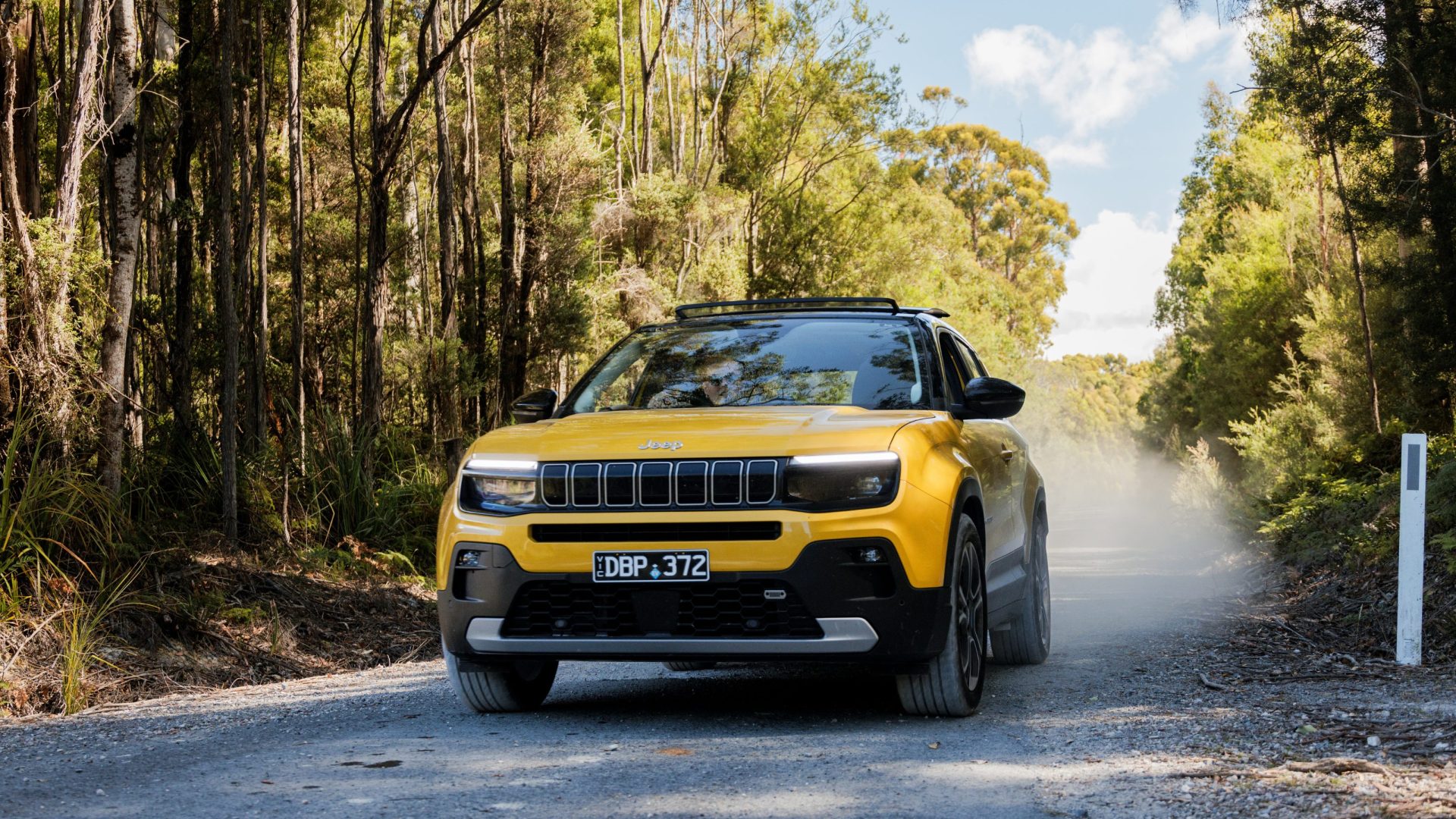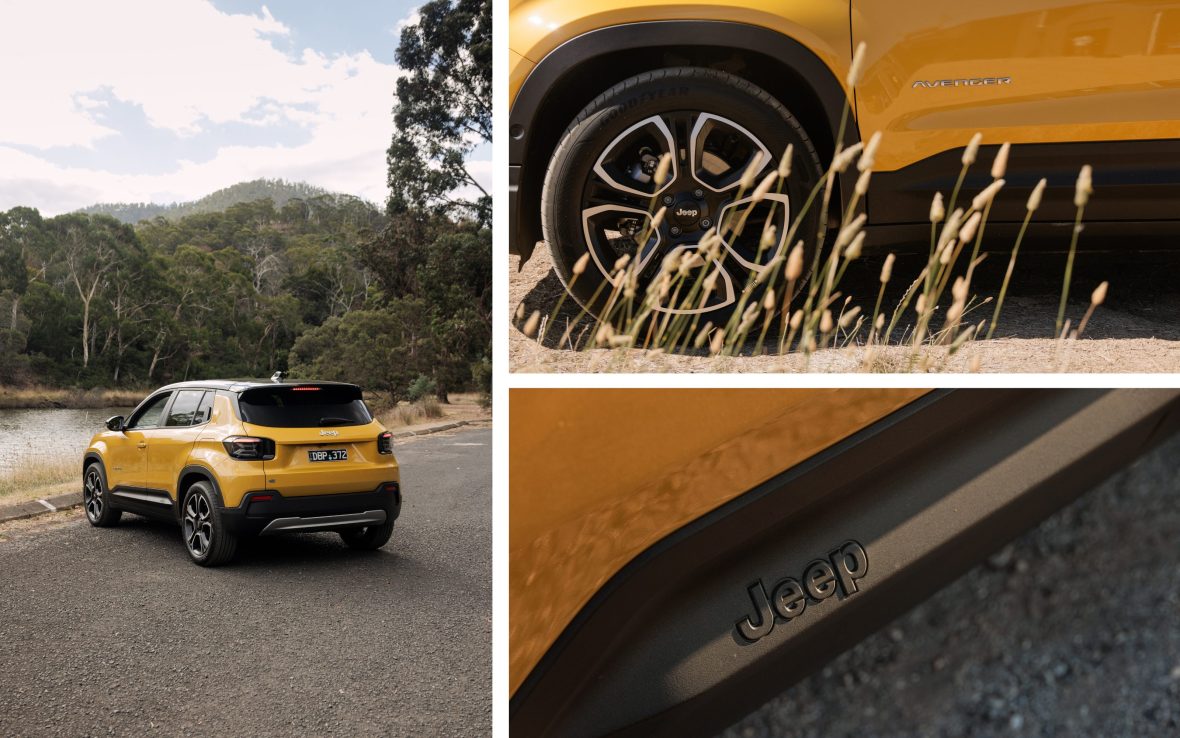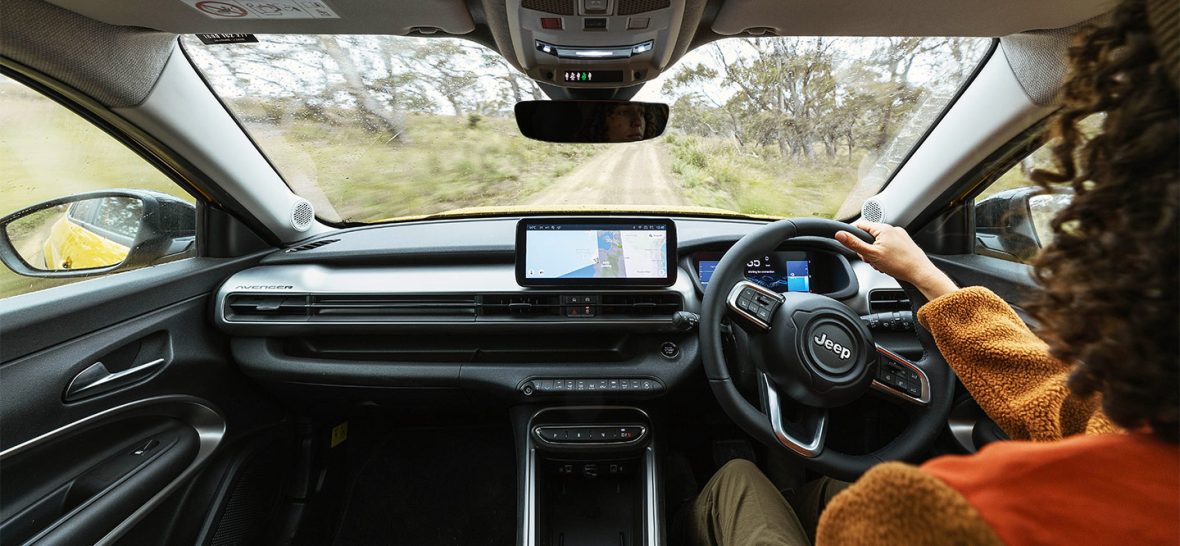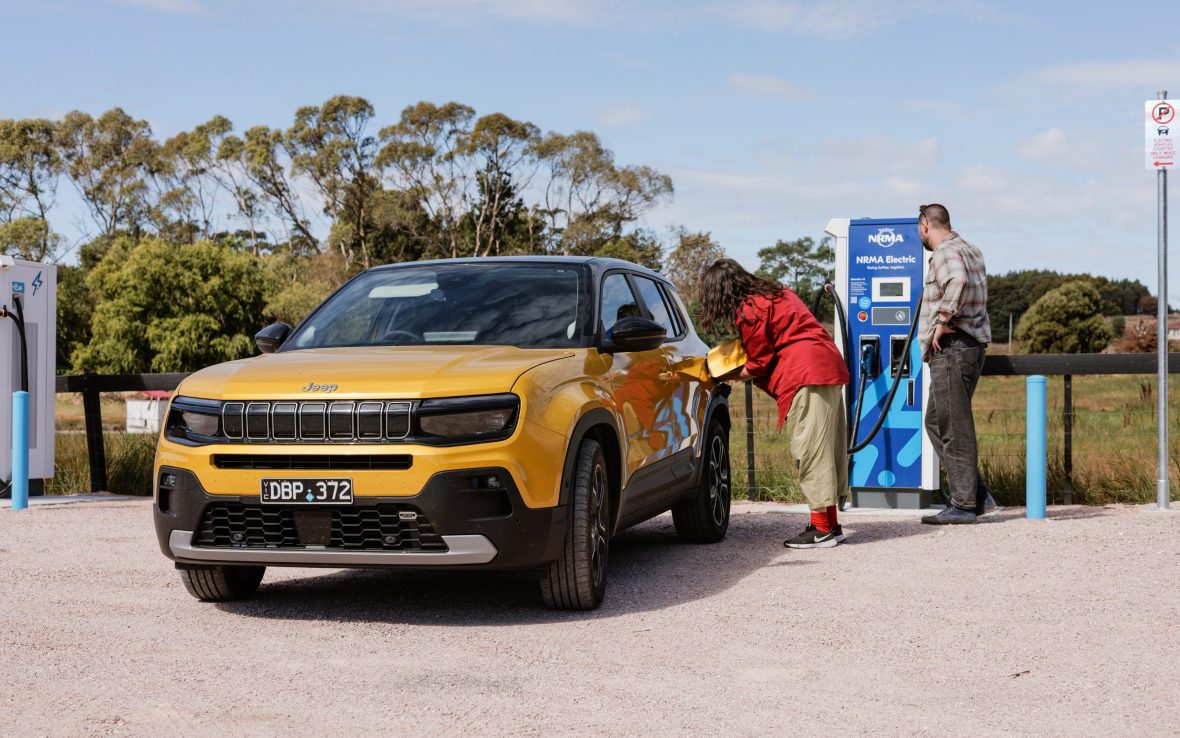
The Jeep Avenger won ‘Best Family SUV’ and ‘European Car of the Year’, but does the iconic car maker’s first all-electric offering live up to the hype? We took it to Tasmania, Australia for a week to find out.

The Jeep Avenger won ‘Best Family SUV’ and ‘European Car of the Year’, but does the iconic car maker’s first all-electric offering live up to the hype? We took it to Tasmania, Australia for a week to find out.
Not all EVs are created equal. Some of them are incredibly expensive. Some of them look a bit horrible. And some of them (you know the ones) are the brainchild of problematic billionaires. The brand-new Jeep Avenger—Jeep’s first foray into the EV market, would you believe it—is none of those things. So we put it through its paces on a week-long road trip through Tasmania.
If you’re reading this, it’s very likely you’re looking for a little more from your car than the average EV fanatic. You care about the planet, of course. And you’re probably pretty prone to a weekend (or weekday) dabble in the great outdoors. You need a bit of space for your camping/kayaking/hiking gear, but you don’t want a tank you have to lug around town. You probably don’t own an EV (yet!) because you’ve been waiting for the right car to come along.
For you, the Jeep Avenger may present an interesting opportunity.

Our trip took us from Devonport on the north coast of Tassie, through the Tamar Valley and down to Bicheno, then to Hobart, then up again all the way to Smithton and the North West Tasting Trail, and back to Devonport where we caught the Spirit of Tasmania home. Just shy of 1,000 kilometers all told—plenty to put this flashy new EV through its paces.
“The Selec-Terrain function means the Avenger can handle minor off-roading and dirt tracks, making it a versatile companion for most weekend adventures.”
Nowhere in the Avenger’s press kit does it mention exactly what the car is avenging, so you’ll have to leave that up to your imagination. With pricing starting at AUD $49,990 before on-road costs (in Australia), the Avenger is pricier than entry-level EVs but much cheaper than many of the more premium options out there. The technical term for this is mid-tier, but this is by no means a middling car.
The Jeep Avenger looks and acts like a Jeep. It’s smaller than your average Jeep at a touch over four meters long, but plenty roomy inside and comes with a 355-liter boot capacity for loading up all your adventure gear. We had no issues loading it full of luggage for our Tassie trip.
The Lake (aqua blue) and Sun (golden yellow) color options are our favorites, and the car comes in three specs: Longitude (base model), Limited and Summit—with the latter spec kitted out with massaging driver seats, heated front seats and 18” alloys to ensure you travel in comfort.
And while this isn’t unique to the Avenger, there’s something about the silence of EVs that makes the driving experience so much more enjoyable. With the windows down winding through Tassie’s pristine landscapes, all you can hear is the wind whistling past and the birds overhead.
The iconic Jeep seven-slot grille makes the Avenger look roughly 75 percent more badass, a dearth of plastic trim means you won’t have to worry about scuffing up the paint job, and a generous ‘sky roof’ provides adequate rooftop access to the great outdoors while you’re fanging it down the freeway (well within the speed limit, of course).

Inside, the Avenger dishes up ample legroom in the front and back, and the driver takes up a reasonably low, sporty driving position. The cabin feels bigger than it is, thanks to a minimalist design and the fact that Jeep didn’t overcook the tech or features—the Avenger has everything you need and nothing you don’t.
Dual 10.25″ infotainment and driver screens give you access to all the mod cons (including Apple CarPlay and Android Auto), with all the key cabin and driving functions accessible via a couple of rows of simple buttons. Where some EVs require thumbing through a screen to turn your aircon up or down, the Avenger makes it possible with the click of a button.
There’s a nice little shelf space on the passenger side, which makes the ideal storage compartment for binoculars, cameras and your dog-eared copy of the Australian Bird Guide (Revised Edition). There’s also a gigantic storage compartment in the center console that offers the perfect hidey-hole for a six-pack of non-alcoholic post-adventure refreshment (BYO ice packs).
The Jeep Avenger is very fun to drive—and Tasmania is a very fun place to drive it in. The car isn’t as quick off the mark (0-100kmph in nine seconds) as some of the higher spec EVs out there, but it isn’t designed to be. During our week-long adventure in Tassie, the Avenger proved itself an incredibly capable adventure machine—handling the windy roads en route to Smithton, for example, with ease.
The Selec-Terrain function and 200-milimeter ground clearance means the Avenger can handle minor off-roading and dirt tracks (although it is decidedly not an off-road vehicle), making it a versatile companion for most weekend adventures. It might be pint-sized compared to the Wrangler and the Gladiator, but the Avenger still packs a punch. We didn’t get too fruity with the Avenger, but we took it down some gravel detours on the way to Mount Gnomon Farm and it more than held its own.

The car has a range of a little under 400 kilometers, which is plenty for most day-tripping purposes, and the rapid rollout of EV charging infrastructure in Tasmania meant we were never too far from a decent charging station.
As you’d expect, there’s a whole bunch of tech under the hood that we don’t need to get into, but the upshot is that the Avenger is very efficient as far as EVs go, and serves up energy consumption of 15.6 kWh per 100 kilometers. The Avenger’s battery also offers ‘top energy density’, which sounds very impressive, and the battery can withstand temperatures ranging from minus 30 degrees to 40 degrees celsius.
Whether or not the Jeep Avenger is right for you depends on a whole heap of factors … But it is an incredibly compelling package for the climate-conscious outdoor adventurer.
It charges quickly too—we found we’d get from 20 percent charge up to 70-80 percent within 20-30 minutes on a fast charger. Just enough time to grab a coffee and/or a scallop pie from your favorite Tassie bakery.
The longest drive we did was from Hobart all the way back to Devonport before we hit the North West Tasting Trail—clocking in at 285 kilometers. We left with 80 percent on the battery and stopped for a quick 20-minute top-up (and pie stop) at Campbell Town’s fast charger which gave us all the juice we needed to go the distance. EV charging still takes longer than filling up a tank with petrol, but unless you’re in a massive hurry, then taking an enforced half hour rest stop is pretty nice, to be honest.
Whether or not the Jeep Avenger is right for you depends on a whole heap of factors. It isn’t the cheapest EV out there, nor is it the most technically capable when compared to higher-end alternatives. But it is an incredibly compelling package for the climate-conscious outdoor adventurer.
The Jeep Avenger is small enough to not be a nuisance on the city streets, but capable, comfortable and roomy enough to get you well into the great unknown (and back again). And there’s something about being able to head out on all your regular adventures without contributing any tailpipe emissions that makes you feel a bit warm and fuzzy inside, you know?
A note on partnership content:
Adventure.com acknowledges the complexity and challenges of travel in the context of our global climate crisis. This article is part of Adventure.com’s paid partnerships program, which enables us to continue publishing stories about a more regenerative and sustainable future of travel by helping to make out platform commercially viable. Adventure.com only partners with brands and products that align with our ethical and editorial standards, and our vision for a future of travel built around lower emissions, deeper connection and more resilient communities.
Hailing from all across the globe, Adventure.com's team of editors is at the forefront of what's happening (and what's not-so-happening) in the world of travel and adventure.








Can't find what you're looking for? Try using these tags: